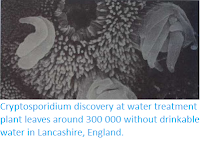Heteroloboseans are flagellated Amoebas closely related to Slime Molds, and generally though to be the most primitive group of flagellated Eukaryotes (i.e. the group closest to the first such organisms to have appeared. They typically have a life-cycle which includes both flagellated and non-flagellated stages, as well as an inert cyst stage that can survive periods of hostile conditions, such as a cold, or dry season.
In a paper published in The Journal of Eukaryotic Microbiology on 13 July 2017, Tomáš Tyml of the Faculty of Science at the University of South Bohemia and the Faculty of Science at Masaryk University, Luis Lares-Jim énez, also of the Faculty of Science at Masaryk University, Martin Kostka, also of the Faculty of Science at the University of South Bohemia, and Iva Dykov á, again of the Faculty of Science at Masaryk University, describe a new species of Heterolobosean Amoeba from the gills of Rainbow Trout, Oncorhynchus mykiss, infected with an unknown nodular gill disease in the Czech Republic.
The new species is place in the genus Neovahlkampfia, which currently only contains a single species, Neovahlkampfia damariscottae, a marine Amoeba from an estuary in Maine, which was formerly placed in the genus Vahlkampfia until a genetic analysis sugested that it should be excluded from this group. It is given the specific name Neovahlkampfia nana, in reference to the small size of this species, which reached 8–15 μm in length.
Globular form of Neovahlkampfia nanawith nucleus (n), mitochondria (m), electron-dense structure (es), and dense bodies (db) in cytoplasm. Tymel et al. (2017).
Neovahlkampfia nana was identified as a a member of the Heterolobosea and a close relative of Neovahlkampfia damariscottae by genetic analysis (morphological comparisons of Amoebae are close to worthless). The species adopted a number of forms in response to changes in conditions, but these were essentially behavioural, rather than true metamorphoses, and the Amoebas were not observed to produce a flagellated or cyst stage (though this does not necessarily mean that they cannot do this).
See also...
Follow Sciency Thoughts on
Facebook.







